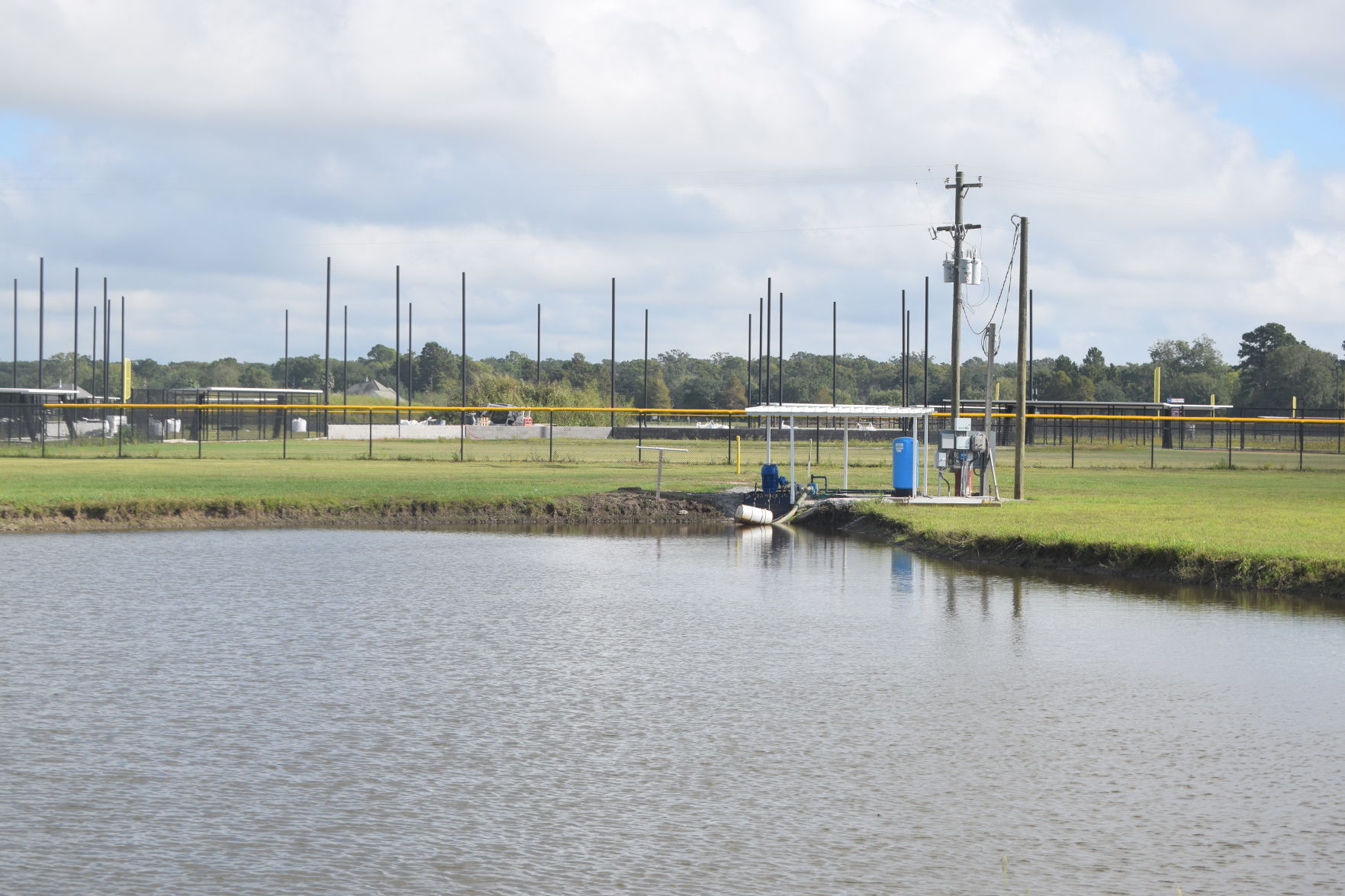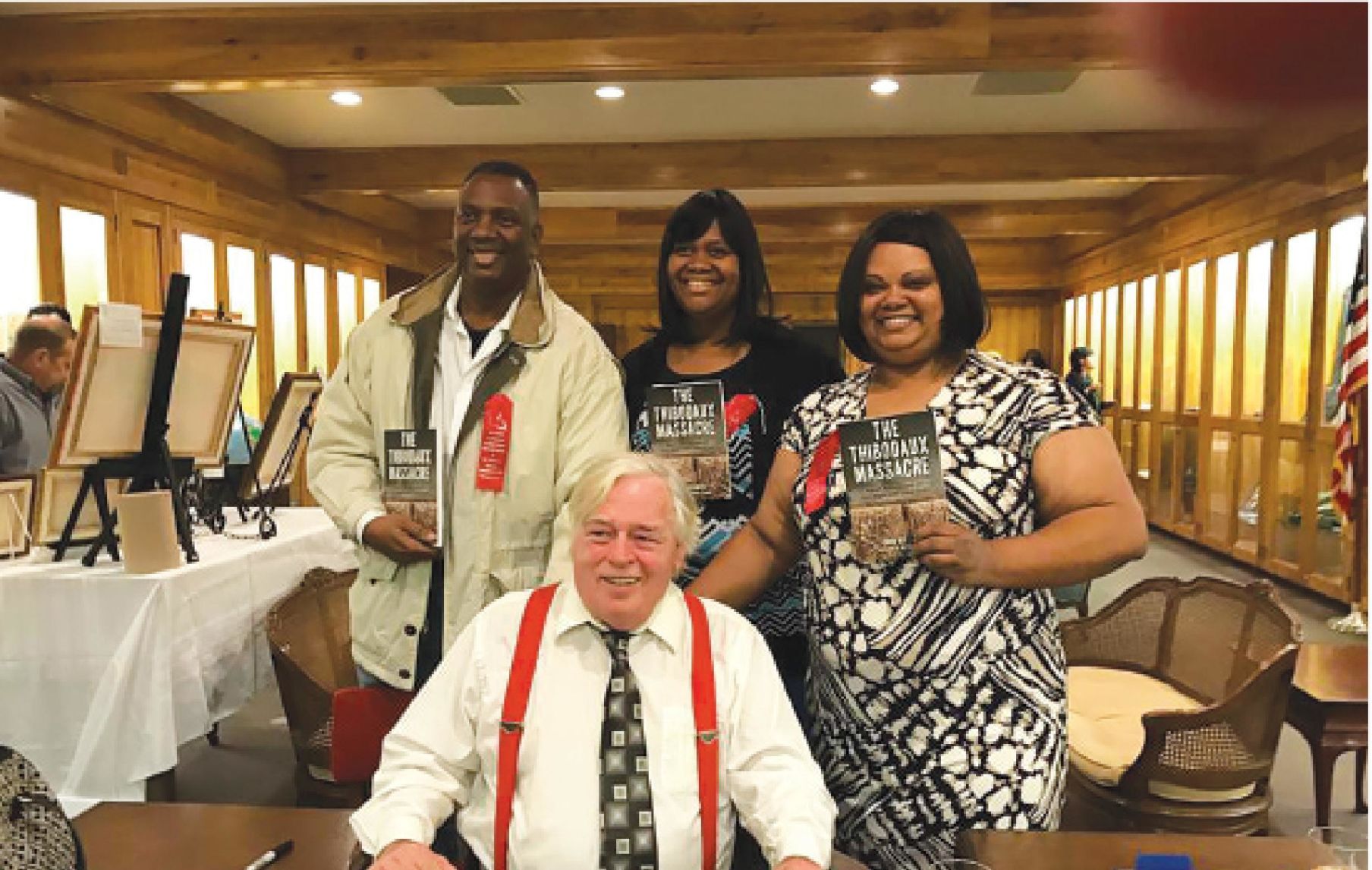
New Rec 2-3 board chosen – lone holdout withdraws
May 10, 2018
Samuel Authement Sr
May 10, 2018Editor’s Note: John DeSantis is The Times Senior Staff Writer.
More than 40 residents of Thibodaux and nearby Lafourche and Terrebonne communities heard first-hand about the work that will start May 17 to help determine whether victims of the 1887 Thibodaux Massacre are buried on the grounds of an American Legion hall.
The University of Louisiana Lafayette’s Dr. Mark Rees and Tulane PhD candidate Davette Gadison answered questions and outlined a plan for work that will begin Thursday, May 17 and continue into Friday, May 18, on the acreage adjoining Raymond Stafford Post 513.
“We will not be removing any remains at this stage and are not likely to encounter any at this point,” said Dr. Rees, explaining that the first examination is designed to study soils on the grassy acre beside the post.
Ms. Gadison estimates there will be as many as four volunteers joining her and a professor of archeology with a ground-penetrating radar device. The GPR is used to identify what the scientists call anomalies in the earth below. Asked to explain what that means, they said anomalies are things that are not normally encountered, perhaps certain shapes of items below that would indicate the potential of a grave site.
Gadison is no stranger to mass graves, having worked on excavations in Guatemala and Somalia.
Historical records indicate that as many as 30 to 60 black people were killed on the morning of Nov. 23, 1887 when mobs of gun-toting whites ran amuck in the streets of the town. There were rumors that striking laborers evicted from Terrebonne sugar plantations, who were given support and succor by families in Thibodaux, had planned an uprising. Searches of homes during the prior week during a period of martial law declared by State District Judge Taylor Beattie and Louisiana Lt. Gov. Clay Knobloch — both Thibodaux residents — turned up no weapons caches. But when two volunteer sentries were wounded by an unknown sniper near the railroad tracks at what is now Canal Boulevard and Gerald Peltier Drive just before dawn on Nov. 23 pandemonium ensued.
Witnesses in newly uncovered documents stated that “they shot every Negro in sight.”
Some of the dead, according to long-held oral histories within black families, indicate that the Legion hall land is where some of the dead were buried by their killers.
The plan the scholars put forth was for ground-penetrating radar to be used May 17 and 18, along with hand-coring of soil samples. The GPR readings and the soil samples would then be analyzed to see if further work is advisable.
If that is the case, Rees and Gadison said, some excavation would be done.
Should remains be uncovered there is a plan for notification of the Louisiana State Archeologist. Assistant Attorney General Ryan Seiderman would then work closely with descendants of victims and the Louisiana 1887 Memorial Committee, a non-profit organized by Times Senior Staff Writer John DeSantis.
DeSantis formed the group while researching his book “The Thibodaux Massacre: Racial Violence and the 1887 Sugar Cane Labor Strike” (History Press, Charleston, SC, 2016). With help from Nicholls State University Chief Archivist Clifton Theriot and the U.S. National Archives, DeSantis tapped research materials not viewed for a century to build his case of a wanton free-for-all.
The committee formed an advisory board of community members and descendants of victims identified by DeSantis. If remains are found, their hope is to have them removed to sanctified burial grounds elsewhere in Thibodaux.
The crowd at last week’s meeting was asked by DeSantis if they approved of the plan and the answer was a unanimous “yes.”
“We are very fortunate to have these scientists volunteering their expertise and their equipment,” DeSantis said. “While other communities are fighting over statues related to their history, the people of Thibodaux white and black are working together to see that restorative justice, if possible, can be done for these dead. People who would normally not be in the same room together have put aside their differences to aid this project, and we hope it will be a model for other communities with difficult histories.”
The committee received its seed money from tugboat heir and philanthropist Arlen “Benny” Cenac. Additional funds were secured with the help of the Diocese of Houma-Thibodaux, with goods and services donated by Rushing Media and Cannata’s Family Grocers and many small individual cash donations.
For more information visit www.LA1887.com. The committee is a registered 501c3 entity.
Visitors will be asked not to walk on the area under study next week, but will be welcome to watch form the sidewalk, DeSantis said.
Senior Staff John DeSantis (seated at center) poses with the family of Jack Conrad during an event for his book. “The Thibodaux Massacre: Racial Violence and the 1887 Cane Labor Strike.” On May 17, work will be done to deter make whether massacre victims are burled near on American Legion Hall in Thibodaux







